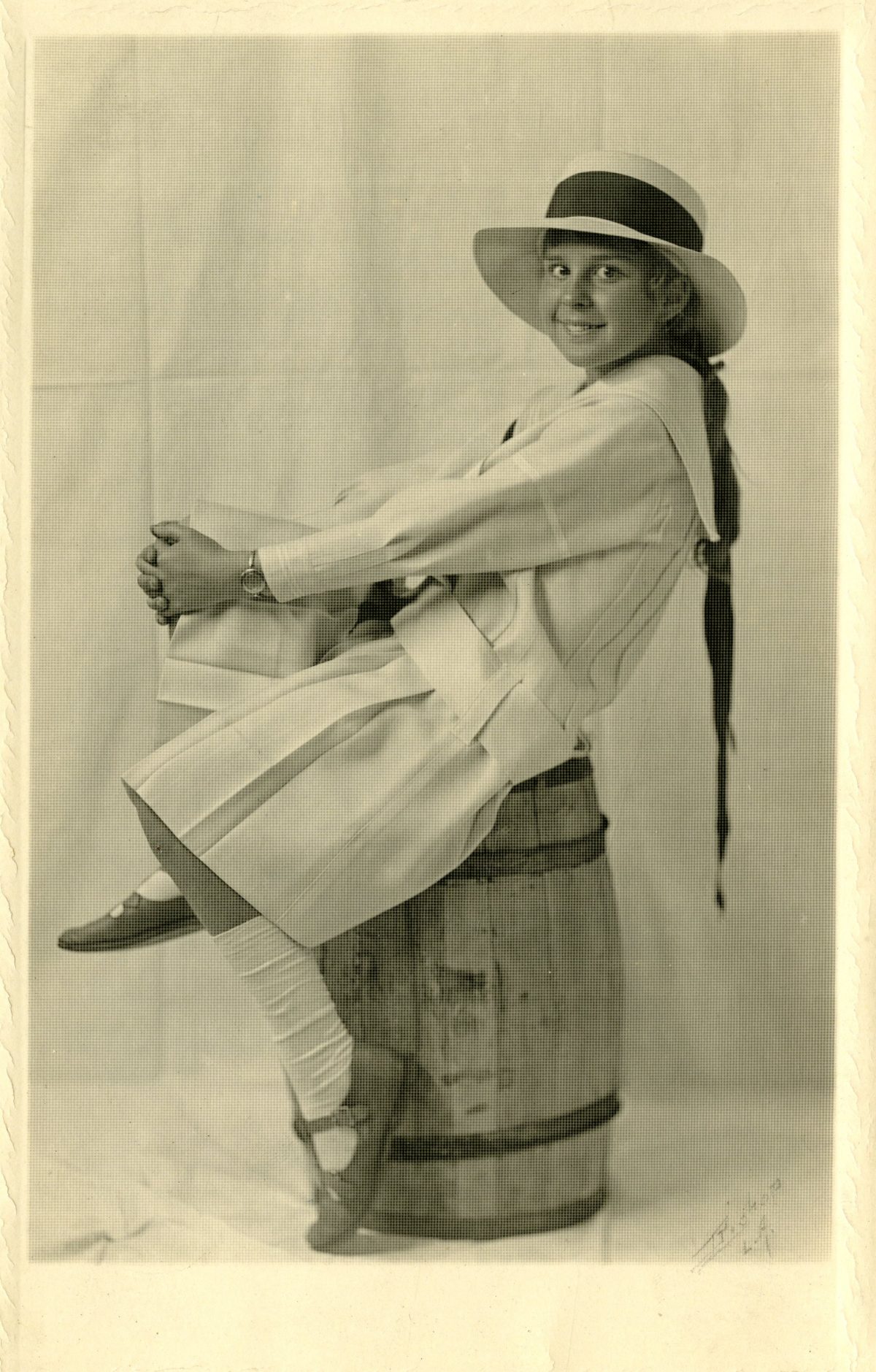Born 1908, Philippa was a writer and the daughter of the English painter, Louie Burrell. Philippa spent much of her childhood travelling the world with her mother, as Louie tried to make a living by painting portraits for wealthy individuals. Philippa made friends easily and was often a hit with her mother’s wealthy clients. She appears to have been a strong-willed and resourceful woman, one who did not like to be tied down. She had many relationships, often with married men, each a ‘great romance’ lasting a short time before she moved on to another phase in her life.
Her life and loves are recorded in an autobiography consisting of three parts: The Golden Thread; The Horses & the Charioteer; and The Dance of the Opposites. But Philippa’s life and loves are also captured in the original letters that have survived and are held by Hull University Archives at Hull History Centre.
Inspired by Valentine’s Day, we’ve selected extracts from her letters of love and heartbreak, each giving a small glimpse of this intriguing woman’s life.
Sir Vincent Caillard
The earliest reference to a relationship in Burrells papers relates to Sir Vincent Caillard, with whom it appears she started corresponding around the time she finished her exams and left school. Louie had painted Sir Vincent and Lady Caillard in 1922, and it is during this period that Philippa must have first met him. Caillard wrote to invite Philippa and Louie to visit him in 1924, which they did, and in January 1925 he wrote to arrange a meeting with Philippa. A few months later, Philippa received a love letter from Caillard:
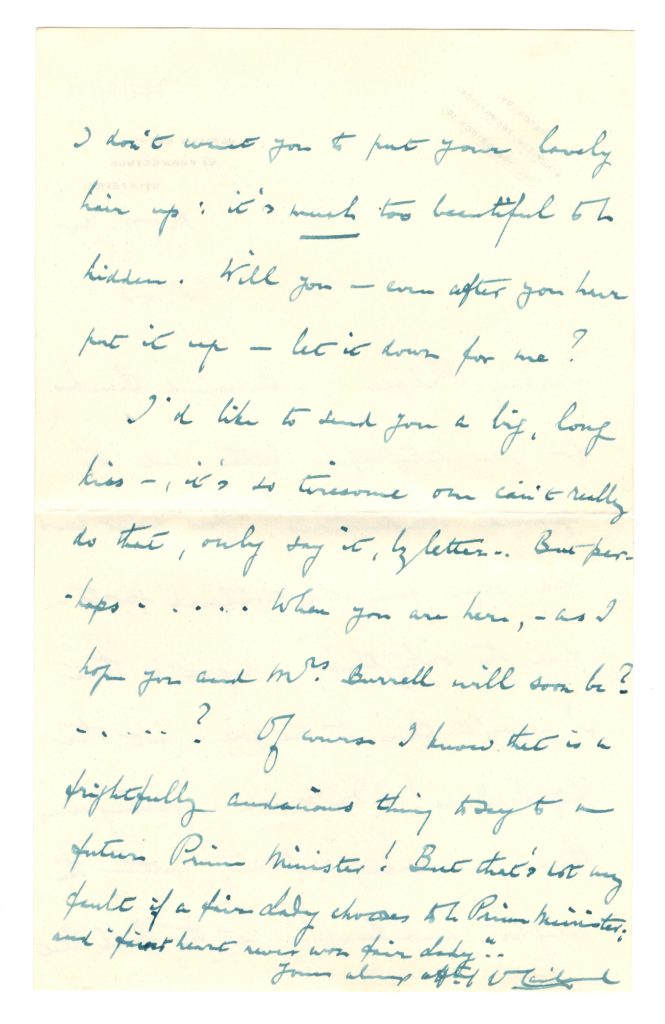
This correspondence appears to have initially lasted a year, with Calliard’s final letter to Philippa written in January 1926. A few later letters were exchanged in 1928 and 1929, but by this time, another man was in the picture.
Lieutenant Harold Clements
In 1928, Philippa and Louie travelled to Delhi, where they met Lieutenant Harold Clements of the Gordon Highlanders. Just a few months later, they were engaged. However, this relationship was not to last either. In May 1929, Clements returned home to Ireland on leave from the army and Philippa took the opportunity to break off the engagement.
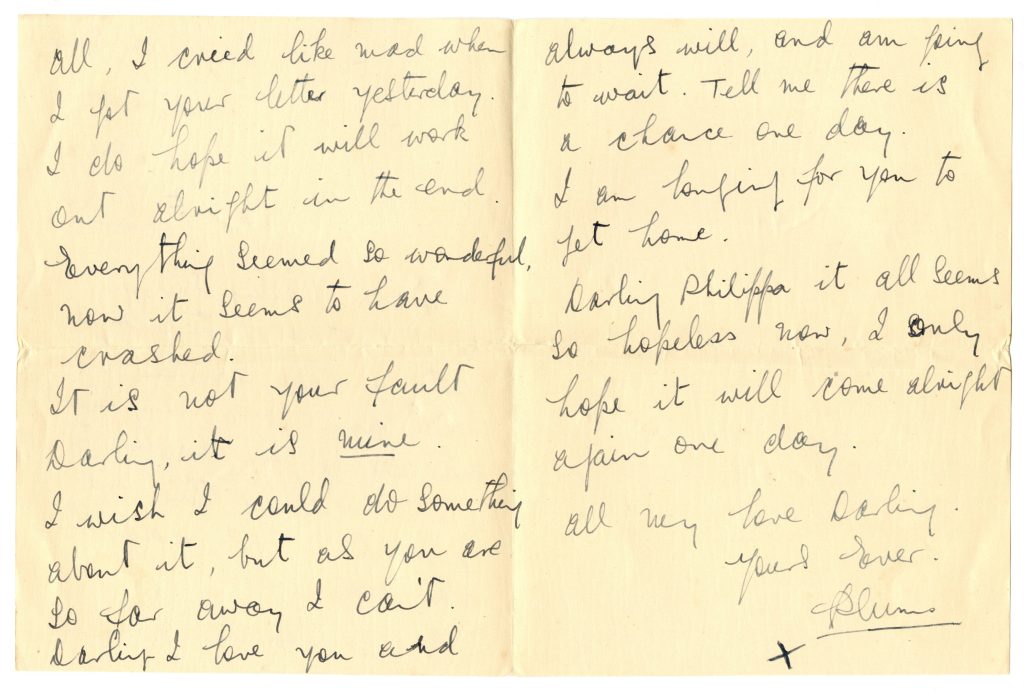
Clements last letter to Philippa was sent in September 1929.
Lieutenant John Gage
Next, Philippa met Lieutenant John Gage of the 4th Hussars whilst in India. Gage was a devorcee stationed in Meerut. She quickly fell in love and the pair became engaged.

This time, there appears to have been concern about the suitability of the proposed marriage. Louie and Colonel Gage corresponded on the subject, both expressing their relief when the engagement was broken off and their belief that it would have been a disastrous marriage. Letters between Gage and Philippa survive for the period January to October 1929.
Vladimir Shavisch
After the initial flurry of romantic entanglements, Philippa’s relationships seem to have subsided, at least for a few years. And then, in September 1936, Philippa attended the Forth World Theatre Festival, held in Moscow and Leningrad. It was here that she met the conductor Vladimir Shavisch.

Despite Shavisch being married with a daughter, the two began a relationship. But Philippa began to feel trapped by the situation and returned to London to escape.
Adolf Kohler
A few years later, with the threat of war looming, Philippa made the decision to go to Berlin in 1939 to immerse herself in what was to enfold in order to further her writing. Whilst trying to find a literary agent, she became acquainted with Adolf Kohler, who was head of an office established to give advice to foreign visitors. The pair grew close, and Philippa’s relationship with Kohler ensured she was kept informed with how the war was developing. Through his efforts, she was able to board the last Warsaw to Paris Express before the outbreak of war. After passing through Paris, Philippa arrived in London on 31 August 1939, where she received a letter from Kohler:
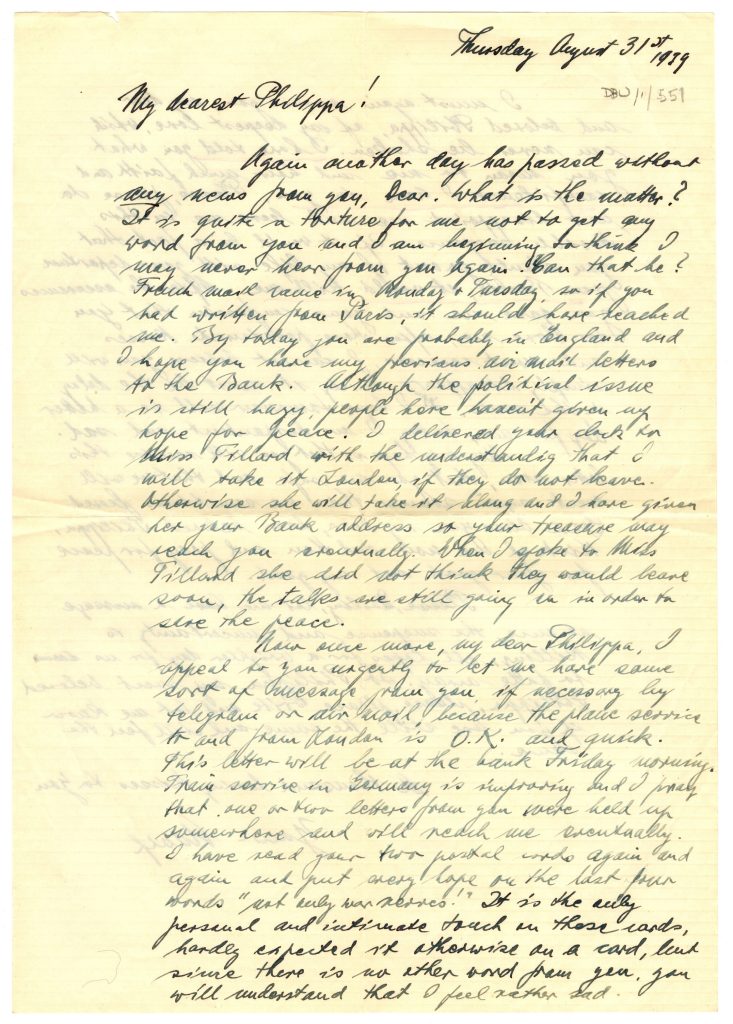
For the next two years, he continued to write. After a gap of several years, he writes again in 1947 to give an account of his actions during the war, denying having any link to the Nazis, and describing a prevailing sense of collective guilt in Germany. But the relationship was long dead.
Major Gordon Hannan
Philippa’s next great love developed in December 1943, after meeting the married Major Gordon Hannan. She fell in love with him whilst undertaking war work at the Newport headquarters of the Bristol Channel Ports.
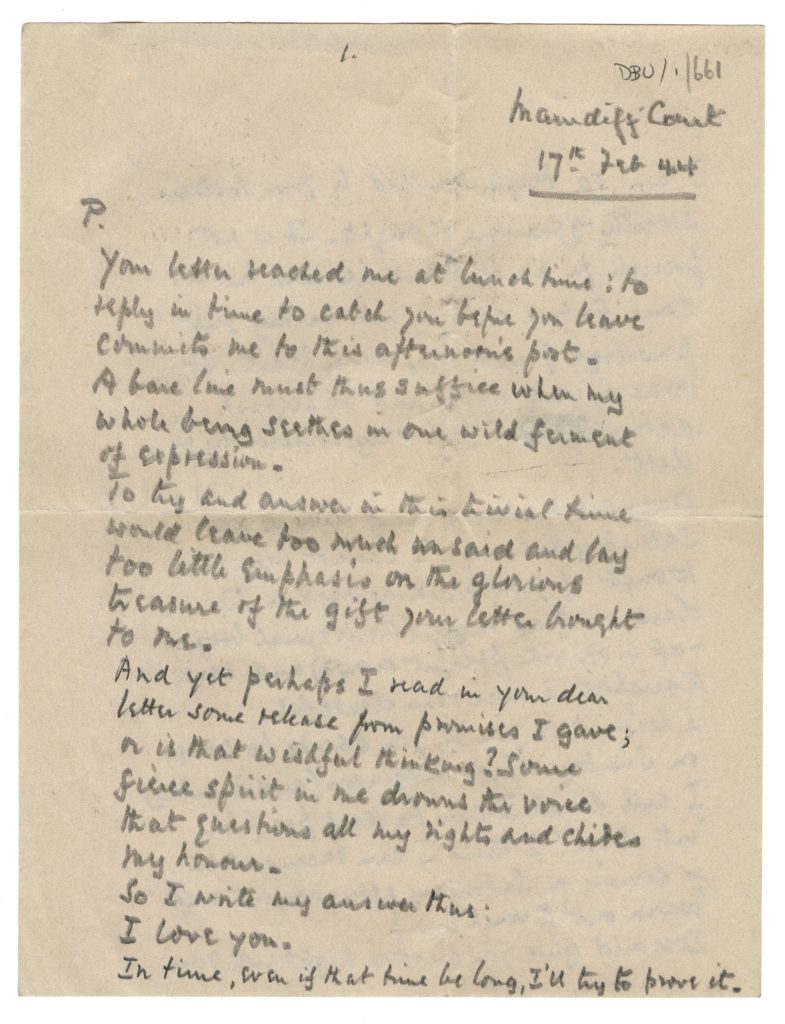
In 1945, Philippa suffered a nervous breakdown and Hannan arranged for her to be invalided out of the army. After the war the pair returned to London and he began divorce proceedings. But the relationship eventually fell apart, with Philippa moving to Kent and Hannan returning to his wife. Their correspondence, which begins in 1943, ends in 1947.
Gordon Craig
In 1947, Philippa published her book ‘He was like a continent’. It failed to raise any interest but spurred her to write a play, titled ‘The Brothers’. Attempts to persuade a renowned scenic designer, Gordon Craig, to produce the play resulted in a brief relationship in 1950.
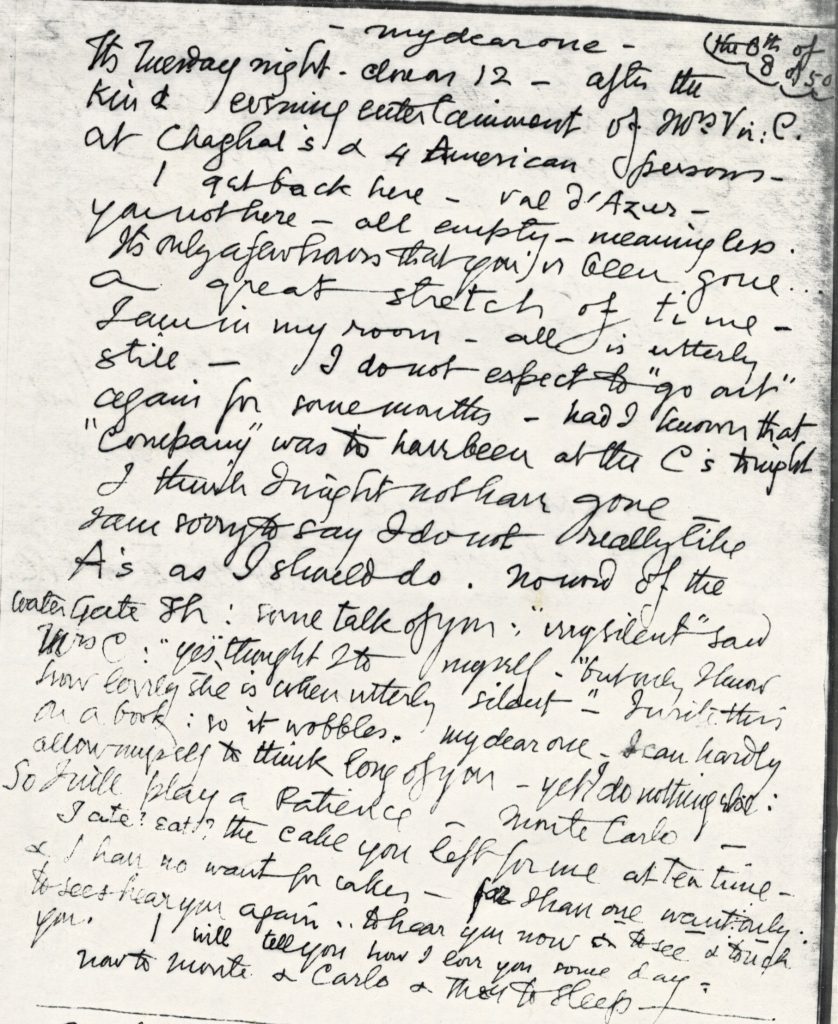
The letters exchanged between them were eventually stolen when, in 1976, Philippa attempted to sell them through Sotheby’s. However, photocopies of the letters survive in the collection, along with an account of the relationship.
Sir C.P. Ramaswami Aiyar
In 1951, Philippa attended the last night of a PEN Club Congress in Edinburgh, an organisation concerned with freedom of expression. At the congress dinner, she was accompanied by the prominent lawyer Sir C. P. Ramaswami Aiyar, whom she had met some time previously. In him, Philippa found the partner that she had been looking for.
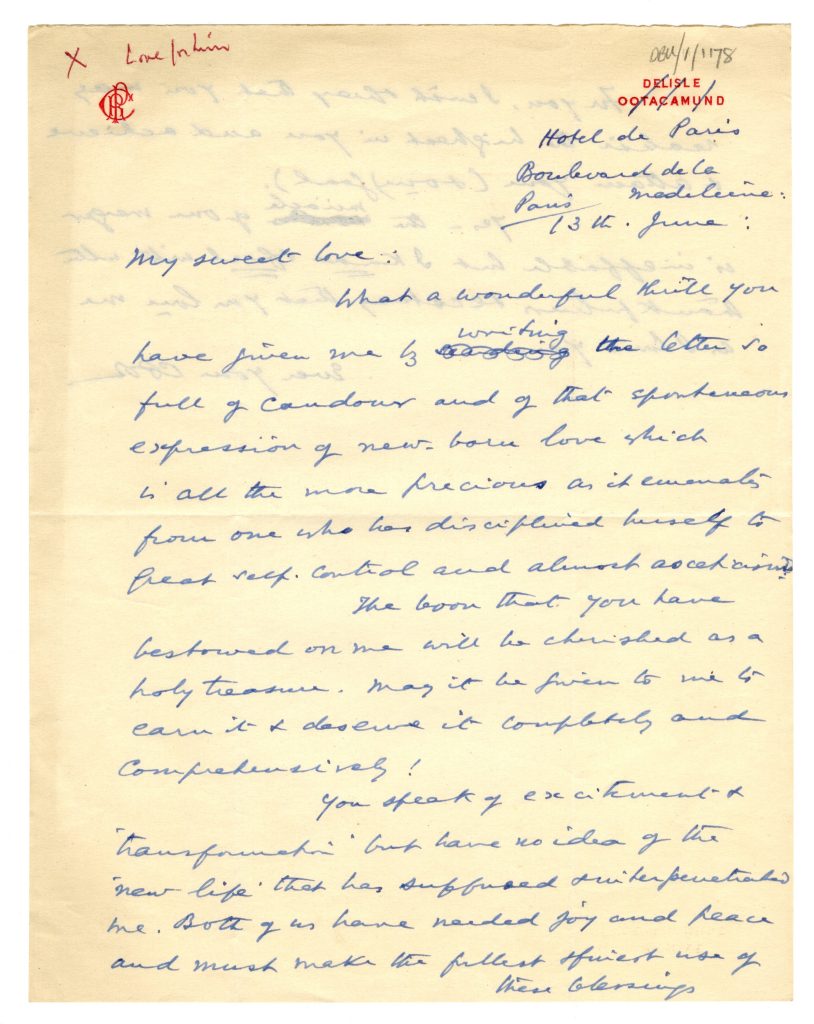
Their relationship endured until his death with meetings and weekly letters.
Fantastic Study Resource
Aside from helping us to understand one person’s personal relationships, this collection provides us with an opportunity to study key historical events and periods through the personal experiences of people who were there.
The literary evidence of the Burrell’s movements around India in the 1920s and 1930s can help us explore questions relating to the experience and operation of colonialism. Surviving letters from the period of Philippa’s stay in Berlin (just prior to the outbreak of the Second World War) can help us to understand some of what was happening in Germany in the 1930s. They can also tell us about the experiences of people trying to move around Europe at this time. Finally, records of Philippa’s time in Russia during the 1930s offer us the opportunity to glimpse what life was like inside Soviet-era Russia.
The incidental details and occurrences recorded in casual letters are not usually included in official reports and releases. Details such as who was at a particular social gathering or political event, what leisure activities were undertaken, and what sights and sounds were experienced can generate a contextual picture of a period or place that would otherwise be lost to us. This is why letters can be such a useful resource to any researcher.
Just starting out with archives? Find out more with our SkillsGuide ‘Archives: The Basics’.
For more information about this collection, see the catalogue of the Burrell Papers [Reference Number U DBU].
